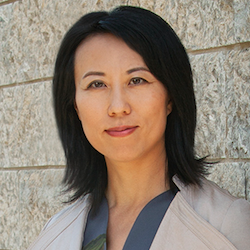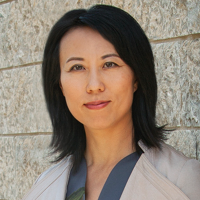An introductory note from Vina Nadjibulla, Vice-President Research & Strategy, APF Canada

The return of Donald Trump to the White House has brought heightened uncertainty to the Indo-Pacific region, posing new challenges for Canada’s evolving Indo-Pacific Strategy and its key relationships in Asia. In the face of threatened tariffs, shifting security dynamics, and changing domestic priorities, Canadian policymakers and businesses alike will need to assess how best to safeguard their interests and manage relations with key Indo-Pacific economies.
Deborah Elms begins by examining the impact of a renewed Trump presidency on Asia’s supply chains and trade environment, with particular attention to Southeast Asian economies such as Vietnam, which benefited under Trump 1.0 but now face uncertainty in 2025.
Jia Wang explores the evolving Canada-China relationship amid escalating U.S.-China trade tensions and the backdrop of foreign interference concerns in Canadian politics. She cautions that a cooling Chinese appetite for Canadian exports, coupled with limited policy bandwidth in Ottawa, suggests further difficulties ahead.
Stephen Nagy’s reflection focuses on Canada-Japan relations, arguing that shifting political landscapes in both Ottawa and Tokyo may limit high-level engagement this year, though Canada’s G7 presidency presents a unique moment to advance co-operation on economic security, artificial intelligence, and other shared priorities.
Sanjay Ruparelia assesses prospects for Canada-India ties, currently at a historic low; he believes a new government in Ottawa might signal a reset that New Delhi would welcome, creating opportunities for repair and revitalization.
Patrick Leblond acknowledges the turbulence Trump’s foreign policy may unleash but emphasizes that Canada’s long-term Indo-Pacific objectives remain valid. While China relations are likely to stay rocky, he highlights the necessity of doubling down on Southeast Asia — including finalizing a Canada-ASEAN Free Trade Agreement — to maintain Canada’s relevance as a partner in the region.
Taken together, these reflections underscore the continuing importance of Canada’s Indo-Pacific Strategy. Even amid leadership transitions, tariff threats, and intensified great-power competition, there remains ample scope for Ottawa to strengthen trade, bolster security co-operation, and position itself as a constructive actor in this dynamic region.
Deborah K. Elms: The Coming Trump Trade Storm for Asia
Returning U.S. President Donald Trump did not wait until inauguration day to start disrupting trade relations. On November 25, 2024, he threatened to impose 25 per cent tariffs on all products from Canada and Mexico as well as 10 per cent tariffs on China, absent changes in immigration and a crackdown on fentanyl shipments into the U.S.

There is substantial uncertainty about whether tariffs will be imposed or will be set at the predicted levels, as Trump has made tariff and trade threats against many targets. Nevertheless, his actions since the election indicate his continued enthusiasm for tariffs as a tool to address a wide array of problems as well as his willingness to play hardball with allies while also standing up to adversaries.
Trump’s first term in office proved a mixed blessing for trade across much of Asia. The export-dependent region has been deeply enmeshed in supply chains for decades. Much of the final outputs for trade in manufactured goods have been destined for the American market, which remains highly lucrative for Asia-based businesses.
Trade was also disrupted during Trump’s first term as the U.S. began imposing tariffs against Chinese imports, rising to an average level of just under 20 per cent by 2018. As a result, firms that had been structured to deliver final goods to the U.S. began to look for alternate sources of production outside of China.
This pattern accelerated changes that had already been underway for some time in the region. Firms — including Chinese companies — were looking to implement so-called “China +1” sourcing as a way of diversifying risk and lowering costs before Trump took office in 2017. The COVID-19 pandemic turbocharged corporate restructuring plans as companies quickly pivoted production to avoid border closures, manage surges in demand, and tackle supply shocks.
Much of the diversification pushed production of manufacturing, especially for parts and components as well as final assembly, across Asia. Vietnam was a particular beneficiary of these adjustments, with trade with the U.S. reaching US$745 billion by the end of 2024.
Vietnam, like others in the region, had been pursuing its own structural reforms and adjustments to drive additional economic growth. This included negotiating and bringing into force a range of important trade agreements, such as a free trade agreement with the European Union, the Regional Comprehensive Economic Partnership with 15 countries in Asia, and the expansion of Comprehensive and Progressive Agreement for Trans-Pacific Partnership with the December 2024 accession of the United Kingdom. Each of these arrangements gave Vietnam-based firms solid access to key markets around the world, often with zero tariffs and improved services and investment access.
While Vietnam’s rising bilateral surplus in goods with the U.S. is likely to make it another early target for Trump’s tariff changes, the web of trade arrangements with others will help to cushion the impact of disruptions. Most other countries in Asia have similar interlocking trade commitments.
These economic ties will be strongly tested in the near term. Trump has a fondness for tariffs, but these will not be the only tool. Increasing scrutiny of inputs to manufacturing, especially from China, will be difficult and expensive to manage for firms in the region. Hence, locations that flourished during the first Trump term may struggle to be similarly successful in navigating choppy waters during his return.
Jia Wang: Canada-China Relations in 2025: More Uncertainty, But Opportunities for Improvement
Irritants in the bilateral relations persisted last year, mainly centring around Chinese political interference investigations, ongoing geopolitical tensions, and new Canadian tariffs on Chinese EVs, aluminum, and steel. Nevertheless, Ottawa managed to reopen high-level communications channels and stabilize its relationship with Beijing. A surprise visit by Canadian Foreign Minister Mélanie Joly to China in July and the subsequent resumption of frequent flights between countries suggest, in part, a return to pragmatic diplomacy.

The start of a second Trump presidency and an expected changing of the guard in Ottawa, however, will likely unsettle this nascent stability.
Trump’s transactional, impulsive, and isolationist approach to foreign affairs, security and international trade — realms in which China remains America’s chief rival — will create challenges for Canada. Even before resuming office, the president-elect promised sweeping tariffs on Chinese exports yet expressed keenness to work with “his friend” Chinese President Xi Jinping to possibly solve all world’s problems. Attempting to align with Washington’s varying tactical manoeuvres towards Beijing could lead to greater uncertainty in Canada’s dealings with China.
Ideology and democratic values are not important considerations for Trump, though his key cabinet picks such as Marco Rubio (for Secretary of State) and Mike Waltz (for National Security Adviser) hold contrasting views. Downgrading America’s strategic allies to transactional and pay-for-protection partners appears a real possibility. The U.S. will become a less dependable supporter for Canada as Ottawa navigates the challenges with Beijing.
As the U.S. accelerates its retreat from multilateralism under Trump, Canada will encounter an evolving dynamic of increasing multipolarity and greater PRC presence in various global domains (economic, security, technology, environment and beyond) and international organizations such as the WTO and the UN.
The need for Ottawa to co-operate more closely with European and Indo-Pacific allies will intensify if Canada plans to continue its values-based strategic alignment to counter China’s influence. On the other hand, Canada might still find common ground with China in preserving and reforming multilateral frameworks especially for trade and climate.
China watchers argue Beijing is better prepared to deal with Washington under the second Trump term. As the sole G2 peer, Chinese leaders seem ready to engage directly with Trump by potentially offering him “personal wins” while playing hard ball at the negotiating table. Swift Chinese countermeasures against new U.S. export controls on China’s chips industry signal a shift to stiffer pushbacks. Direct bargaining between the world’s two largest economies could come at a cost for Canada. Canadian farmers and energy producers may feel the squeeze should China agree to buy more American agricultural or energy products similar to the later abandoned deal made during the first Trump presidency.
The Chinese economy will face strong headwinds in 2025 with notable implications for Canada. If China’s GDP growth continues to slow as forecasted, Canada will feel the pinch of flat international commodity prices and a lacklustre global market. While bilateral trade volume has grown steadily despite frosty relations between Ottawa and Beijing over the past years, new opportunities and barriers are emerging.
In building economic resilience as a defence to Trump 2.0., China has introduced fresh incentives such as reduced tariffs to expand trade with third countries. Trade was featured prominently as China sought to improve ties with India, Japan, Australia, EU countries, and other Asian neighbours. Trump’s threat to slap tariffs on allies and rivals alike opens doors for China to generate rapport among developing and advanced economies, including Canada.
A weaker yuan and Canadian dollar against the greenback and pressure to lessen reliance on the U.S. market could motivate the two countries to expand commerce in 2025.
However, a new source of friction recently surfaced when the Canadian government proposed fresh levies mirroring the American position on Chinese solar products, critical minerals semiconductors, and other exports. Once implemented, they will predictably prompt retaliatory responses from Beijing.
As domestic consumption remains soft despite recent stimulus and rumored handouts, Chinese leaders are determined to boost the country’s advanced manufacturing prowess (EVs, batteries, and solar components in particular) with a whole-of-society approach that could push added “overcapacity” into foreign markets. Additional duties on Chinese exports and flat demand for Canadian goods are possible scenarios for 2025.
Given the greater capacity required to navigate the relationship with Canada’s most important trading partner, Ottawa, regardless of which party will be in charge, is widely expected to be left with squeezed resources to handle other international priorities. Canada’s China strategy and Indo-Pacific Strategy may see a period of adjustment and potentially take a back seat especially if a more domestically focused federal government is elected.
Keen to improve the “external environment” to support its economy and to soften the blow of additional American tariffs, China may demonstrate more openness to concede on economic issues and to improve relations with Canada.
While challenges and uncertainties will likely endure, 2025 may also present opportunities to improve Canada-China relations. For better or worse, China and its multifaced impacts on Canada can’t be simply wished away. A thoughtful rethink of a long-term China strategy will serve Canada well for the years to come.
Stephen Nagy: Trump’s ‘Transactional’ Diplomacy to Shape Much of Canada-Japan Relations in 2025
In 2025, Canada-Japan relations will be influenced by at least three factors: 1) the nature of geopolitical change prompted by Trump 2.0; 2) Canada’s selection of a new prime minister; and 3) the longevity of the Ishiba Shigeru administration in Japan.

First, the Trump 2.0 presidency will be defined by transactional diplomacy and a Republican brand that focuses on power, more equal burden-sharing amongst allies, and intense strategic competition with China, all of which will place inordinate pressure on Canada and Japan to align with Washington on diplomacy, trade, technology, security, and politics.
In practice this means using the American economy and military assets as leverage to shape decision-making in Ottawa and Tokyo, specifically on China and Russia. Trump will push Ottawa and Tokyo to align their technology exports and trade policies with U.S. guidelines. This will mean carrots and sometimes sticks to encourage investment in the U.S., to adopt strict export restrictions on technology, tariffs against all high-tech industries that China has invested in its Made in China 2025 Initiative including EVs, environmental technologies, artificial intelligence, etc. It will also include demands on both Ottawa and Tokyo to increase defence spending and engage in security co-operation in more concrete and significant ways to contribute to the U.S. efforts to comprehensively outcompete China, the country the U.S. has acknowledged as its most “consequential strategic competitor for the coming decades.”
Second, Canadian Prime Minister Justin Trudeau’s resignation announcement on January 6, 2025, paves the way for new leadership in Canada, whether a new Liberal-led coalition or a Conservative-led government. The former would likely lead to further atrophy in Canada’s relations with Japan and other Indo-Pacific states except in specific co-operation initiatives such as sanction evasions in the Sea of Japan or the use of dark vessel technology to deal with illegal, undocumented and unregulated (IUU) fishing in the South China Sea. The Trudeau government has been described as having “intellectual underpinnings clinging desperately to an old liberal internationalist order” and not being taken seriously in Asia.
Meanwhile, the latter — a Conservative-led government — is untested and would face significant funding restraints. It is difficult to envision how Conservatives would be able to quickly bolster Canada’s defence spending, reset badly damaged relations with China and India, and energize Canada-Japan relations. After all, simply being tough on China, defending human rights, and protecting democracy is a campaign slogan, not a strategy. Without a strategic vision of where Conservatives want to lead Canada, they will not be able to reboot Canada’s international relations, including relations with Japan.
Lastly, the Canada-Japan relationship in 2025 is unlikely to get the attention it requires as Prime Minister Ishiba continues to battle conservative holdouts within his Liberal Democratic Party, a wobbly minority government, and a Trump administration that will likely see Ishiba’s diplomatic outreach to China as incompatible with Washington’s concerns about Beijing.
Notwithstanding these hurdles, Ottawa and Tokyo should leverage Canada chairing the G7 to co-ordinate diplomatic initiatives that demonstrate their joint value to the U.S. This could mean co-ordinating joint statements and a communique via the G7 on technology restrictions, semiconductor production, co-operation on critical minerals and energy exports, economic security and resilience, cyber and disinformation co-operation, legacy munitions defence production, and recognizing Taiwan as a global public good.
In short, Canada-Japan relations in 2025 and in the years ahead will be overwhelmingly influenced by the Trump 2.0 administration’s transactional approach to foreign affairs. Ottawa and Tokyo will need to coordinate their diplomacy to effectively lobby the U.S. to shape the Trump agenda.
Sanjay Ruparelia: What Issues Will Shape India’s Foreign Policy in 2025?
In 2025, India will maintain the country’s longstanding commitment to maximizing strategic autonomy in the evolving multipolar order. Tensions with key allies will continue to arise. That said, Indo-U.S. relations display growing strategic congruence. The return of Donald Trump to the presidency will likely deepen this dynamic, although it may generate tighter constraints in some domains while alleviating pressures on other fronts.

Close observers note that New Delhi is less concerned about a second Trump administration than traditional U.S. partners for several reasons. India is neither a formal ally — so largely immune to accusations of ‘free riding’ — nor a genuine adversary. A hawkish approach towards China would bolster ties with India, downplaying other disagreements. Others contend that many in the Modi government prefer Trump’s transactional approach to bilateral relations.
That said, New Delhi will strive to stabilize relations with Beijing. The agreement reached in October 2024 to patrol the disputed Line of Actual Control has momentarily de-escalated tensions since violence erupted in 2020. Moreover, the aspiration to compete with China in manufacturing makes it hard simply to impose restrictions. Indian conglomerates increasingly rely on Chinese inputs, technicians and know-how to expand production of electric vehicles, advanced batteries, and microchips. Hence their recent calls to loosen constraints on visas and investments.
These recent developments highlight some of the risks Modi 3.0 confronts vis-a-vis Trump 2.0. The US currently runs a US$40 billion trade deficit with India, which may lead to demands to buy more American goods. The desire to reshore manufacturing to the U.S., and crack down on immigration, could pose friction. Indian nationals account for more than 70 per cent of H-1B visas to the U.S. Divisions within the new Trump administration, between ‘America First’ proponents and the needs of Silicon Valley, will influence whether these issues become contentious.
More widely, Trump has threatened to impose 100 per cent tariffs on BRICS countries if they seek to create an alternative currency to the U.S. dollar. India counters that such proposals are meant to support multipolarity, facilitate trade and offer financial stability, not oppose the U.S. It certainly does not want to enhance the power of China, which dominates the grouping and international trade generally. Finally, the Modi government expects Trump to visit New Delhi during the second half of 2025 for a Quad summit. Expectations that he may seek to transform the Quad into a security pact would generate disagreements, since New Delhi has opposed such a move to date. In short, Indian Prime Minister Narendra Modi will invest in strengthening relations with Trump without sacrificing better ties with China and other key partners to enhance its strategic autonomy.
What does all this mean for Indo-Canada relations?
Despite tentative signs of improvement in early 2024, the diplomatic crisis that has engulfed Ottawa and New Delhi over the last two years has only deepened. In June, the National Security and Intelligence Committee of Parliamentarians released a redacted report, claiming Indian government interference in the Conservative leadership contest that elected Pierre Poilievre. In October, Canadian Prime Minister Trudeau alleged the RCMP investigation into the June 2023 assassination of the Khalistani advocate Hardeep Singh Nijjar had uncovered a much wider conspiracy of extortion, coercion, and violence linked to India, leading to the expulsion of its high commissioner to Canada and several other diplomats.
New Delhi rejected the accusations outright, reportedly spurning efforts by Ottawa to co-operate, and responded in kind. The fallout marked a stark contrast with its co-operation vis-à-vis Washington, which allowed law enforcement agencies to take the lead and file an indictment in court, leading to the arrest of the accused former intelligence officer. Given the open RCMP investigation in Canada, few details have been released to date. But the gravity of the accusations fuelled violent clashes between Khalistani advocates and Modi government supporters in Brampton and Surrey on the 40th anniversary of the assassination of Prime Minister Indira Gandhi and anti-Sikh pogrom that occurred in its wake. Canadian party leaders, local elected officials and community leaders condemned the violence, which Prime Minister Modi called an attack on Hindus.
The prospects for improving relations seemed to have dimmed further amid recent allegations by India’s Enforcement Directorate that colleges in Canada have exploited temporary resident visas to engage in illegal human trafficking. In addition, reports that international students and temporary foreign workers from South Asia increasingly suffer hostility, racism, and blame for the affordability and housing crisis sow more animosity and fear.
Commentators in India believe the resignation of Canadian Prime Minister Justin Trudeau and a probable spring federal election provide an opportunity to reset fraught diplomatic relations. In recent speeches, India’s External Affairs Minister, S. Jaishankar, noted Canada’s significance as a major resource power, and the importance of pursuing Track II diplomacy to a greater degree. At this stage it is hard to discern how a new federal government in Ottawa, Liberal or Conservative, would address the current impasse. In principle, a change in leadership in Canada offers a window to confront recent transgressions and longstanding issues afresh.
Who becomes the next prime minister after the anticipated federal election, and whether the criminal investigations in Canada will be completed and lead to prosecution in order to seek accountability, will matter significantly. Whether the new Trump administration would be their ally or adversary, however, is an open question.
Patrick Leblond: Balancing Trade with the U.S., China, and Indo-Pacific Partners
Canada’s Indo-Pacific Strategy (IPS) was developed to address, in part, geopolitical challenges that Canada is facing, notably in terms of China-U.S. economic tensions. The strategy’s main objective is to enhance Canada’s engagement and co-operation with countries in the region outside of China. In terms of trade and investment, the IPS seeks to increase economic flows between Canada and the region, especially with countries in the Association of Southeast Asian Nations (ASEAN). The long-term goal is to increase Canada’s exports and sustain economic growth while reducing its economic vulnerability vis-à-vis China and the U.S.

The main geopolitical change that Canada (and the rest of the world) faces in 2025 is Donald Trump’s return to the U.S. presidency; however, it’s not fundamental in nature. Yes, Trump and members of his incoming administration have been making tariff threats to various countries, including Canada. In the meantime, the Biden administration has continued to impose trade and investment restrictions on doing business with China. The latter has even blocked the acquisition of U.S. Steel by Japan-based Nippon Steel. For its part, China has imposed export restrictions on critical minerals such as gallium and germanium, which are important for green technologies like batteries. As such, 2025 is likely to be just a more intense version of previous years in terms of geoeconomics.
Consequently, Canada’s IPS doesn’t need to change per se. What does need to change is the IPS’s implementation to provide greater alternative sources of imports and exports for Canadian business, which will suffer from the expected “trade war” with the U.S.
Because of the uncertainty surrounding the Canada-U.S. economic environment, Canadian governments and businesses should devote more resources to exploring long-term investments on both sides of the Pacific to generate greater economic flows between Canada and its Indo-Pacific partners. Obviously, it will be more difficult for Canada to sell itself as a gateway to the U.S. in the coming years until some kind of ‘deal’ (either a revised Canada-United States-Mexico Agreement, or CUSMA, or a separate economic security agreement) has been made with the Trump administration. That’s why it is key for Canadian private- and public-sector leaders to “sell” Canada as one of several alternative economic partners to China and the U.S. When relations with the U.S. will have stabilized, then the enhanced relationships built with partners in the Indo-Pacific region should pay off even more.
ASEAN countries, Japan, and South Korea are already working hard to reduce their economic dependency on both China and the U.S. At the same time, Chinese firms are looking to relocate some of their production to these markets, especially within ASEAN countries, to circumvent trade restrictions imposed by Western countries vis-à-vis China.
For Canada, these shifts create opportunities for trade and investment. For example, they offer an opportunity to develop and export critical minerals to the region for the manufacturing of semiconductors, batteries, electric vehicles, and solar panels. Similarly, they offer export opportunities to Canadian auto-parts manufacturers. In return, they will make it easier to import these products in a way that reduces dependence on China and avoids tariffs on U.S. goods because of the expected trade war. On the other hand, Canada will have to remain vigilant when it comes to ensuring that rules of origin associated with the Comprehensive and Progressive Agreement for Trans-Pacific Partnership and CUSMA are effectively respected to avoid U.S retaliation for goods made by Chinese firms outside of China. Canada doesn’t want to be a conduit for restricted Chinese goods entering the U.S.
In addition, Canada should seek to conclude its trade negotiations with ASEAN in 2025. Ottawa’s recently concluded negotiations with Indonesia are a good sign that it is possible to reach agreements with countries in the region. Canada should also examine how it can collaborate with Indo-Pacific countries to lower tensions between China and the U.S. After all, none of the countries in the region benefit from the economic tensions between the two superpowers.
In sum, the return of Donald Trump to the U.S. presidency is a not fundamental shift in geopolitics. Canada must push even harder in implementing its IPS and enhancing economic ties with Indo-Pacific partners (outside China) while ensuring that it doesn’t worsen relations with Washington in the process.









